
Practiceo
Centralizing and facilitating the patient’s health journey - UX Research|Workshop
3 min read
“The patient, actor of his health”
CONTEXT
Practiceo is an online platform for managing the patient-practitioner relationship, located in French-speaking Switzerland. It is a product available since 2015 on practitioners and private sector clinics, with appointments management, fees, as well as the publication of patient medical questionnaires, monitoring of health constants, and simplified messaging.
THE CHALLENGE
Our mission, working on the platform on the patient side.
During his health journey, the patient is led to perform many actions (research practitioner, making appointments, analysis to do, taking medication, …). Depending on the pathology, health care can become complex, with interactions between several practitioners, the transmission of information by the patient to different actors, a historization of treatments and a long-term follow-up.
ROLE & TEAM
We were a team of 3 people including 2 UX designers and 1 Artistic Director. I mainly devoted myself to the Research part (Benchmark, Study / Context around the product, User Research)
DESIGN PROCESS
Double diamond method-4 phases:Discover, Define, Develop et Deliver
Contextual research
EHealth in Switzerland– Telemedicine in Switzerland– Documentation & International study on the experience of the population aged 18 and over with the health system of their country (frequency of consultation, making appointments, consultation: doctor-patient relationship, prescriptions, follow-up and coordination of care between doctors)
Online Survey (Typeform)
Relied on social media: 25 questions (average response time 7 minutes) – 69 respondents. About frequency of consulting a health professional, finding a doctor, making appointments, medical questionnaire, consultation and follow-up, prescriptions, technology and health, health data online.
Semi-structured interview
12 people interviewed by phone call (distance constraints between Paris, London, Rennes, and Geneva, combined with tight timing)
Projective method of interview selected. Orientation of the interview:– Personal organization– Sensitivity to digital tools related to physical activity and/or health– Medical consultations– History and medical follow-up– Projection towards an ideal medical platform
Result– We have listed the answers and identified all the features expected, grouped and organized by themes.– Then prioritized by the largest expected number.
Benchmark platforms and apps that offer one or more of the expected features
Personas
Identification of behavioral patterns. Using the results of the interviews, identification of the profiles by identification of behavioral variables. Then representation of each variable on an axis, distribution of the participants on scales, identification of the behavioral patterns.– Creation of proto-personas (no possibility to conduct new interviews for timing issues)
Co-creation workshop
Videoconferencing between Paris, Geneva, London and Rennes
Goals– Present our personas to the sponsor team in Geneva;– Validate our proto-persona;– Confront the expectations of patients to those of health professionals;– Confront patients’ expectations with the technical realities of feasibility;– Generate ideas (strategies, features, …);– Determine user paths– To bring out new hypotheses of solutions;– Create a link between the UX team and the sponsor team.
Participants: 1 doctor, director of innovation, director of consulting, project manager
Games: Choice of a persona and individual realization of an Experience Map. Sharing and sharing results.
User Flow
Site map
Prototype (Invision):http://bit.ly/2qDshSB
User test-Eye tracking
Total duration of 45 minutes/4 participants: 1 woman, 3 men, between 19 and 50 years old, including a person with extensive experience in complex health care.
OrganizationReception and installation of the participant (11 minutes), manipulation of wireframes (20 minutes), questionnaire and post-test interview (14 minutes).
PurposeValidating the modeled features. Navigating a journey within a mainstream medical software, integrating the reading of information and the management of personal data, was here the main problem.
MethodRecording the candidate’s screen, the movements and clicks of the mouse pointer, the tracking of his eyes using an eye tracker, and we made a video capture of his face. We also have audio recording for handover and post-test interview.Creation of an observation grid, matrix of difficulties
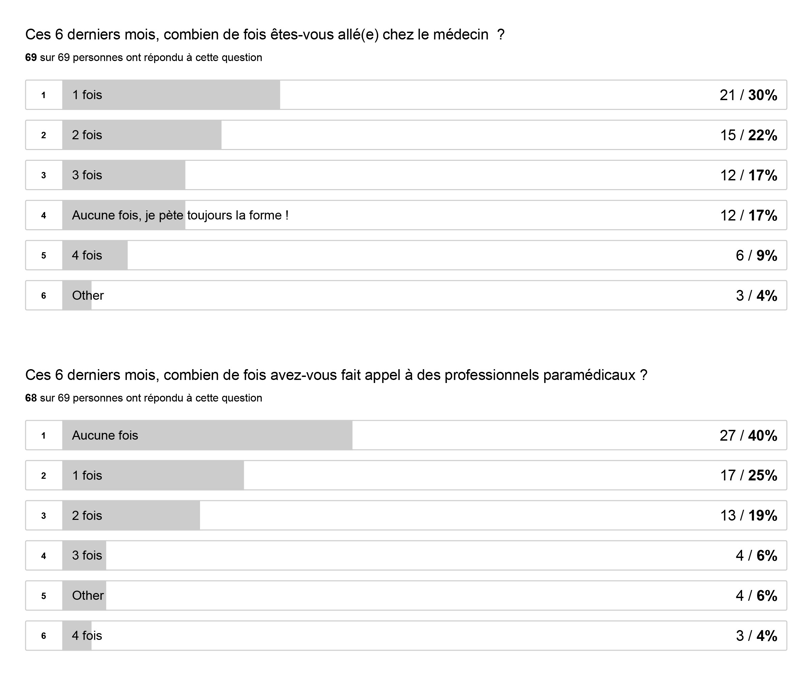

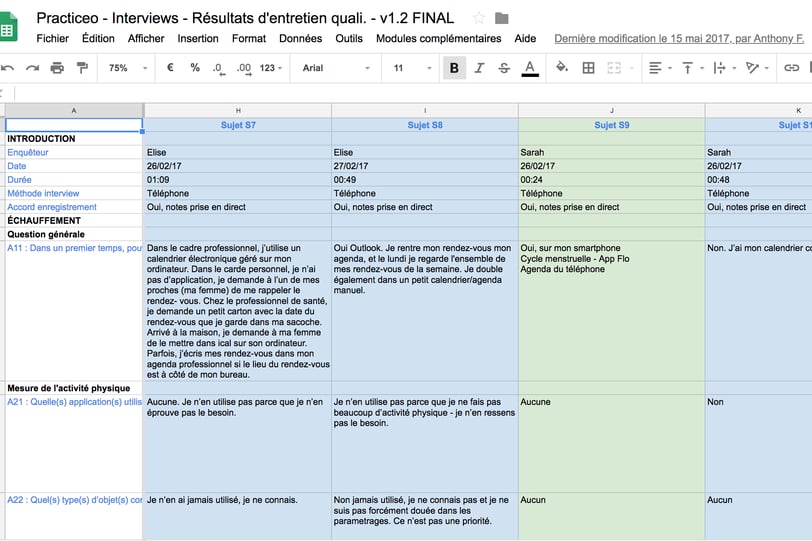

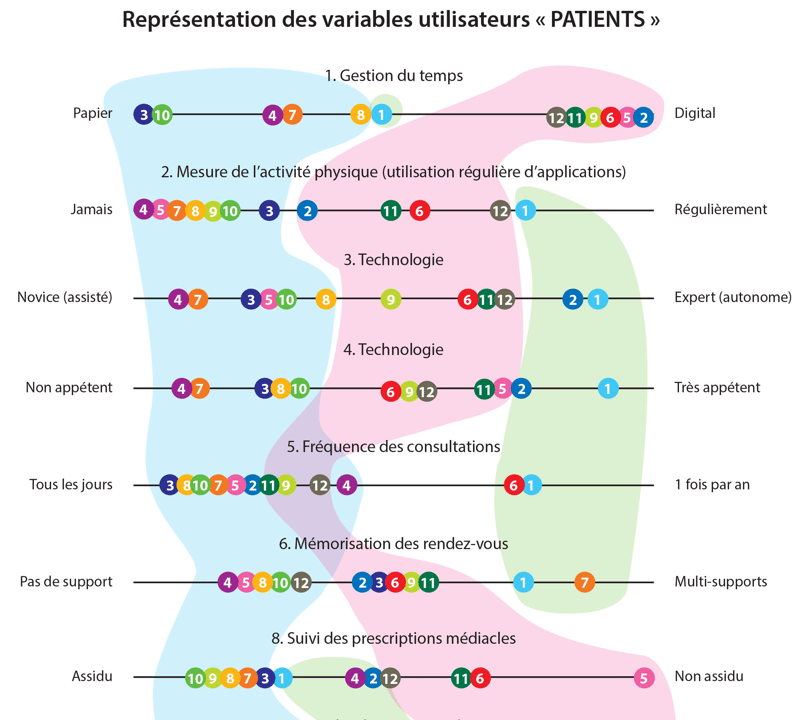

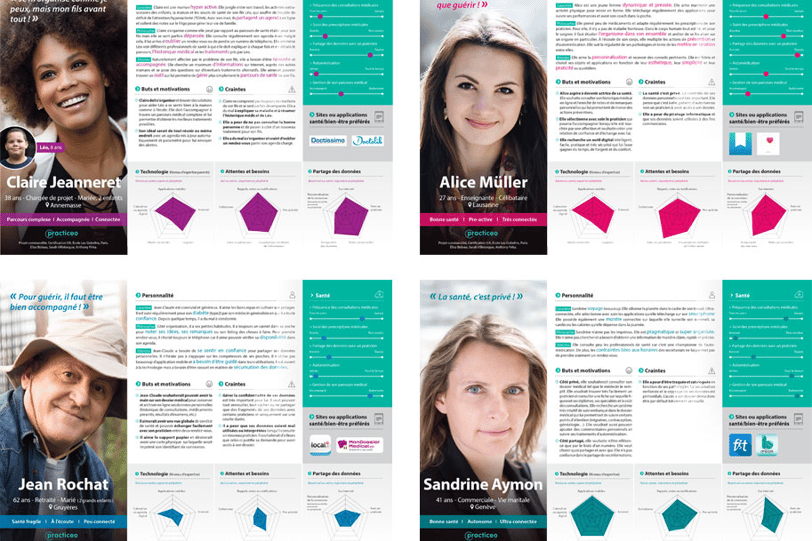

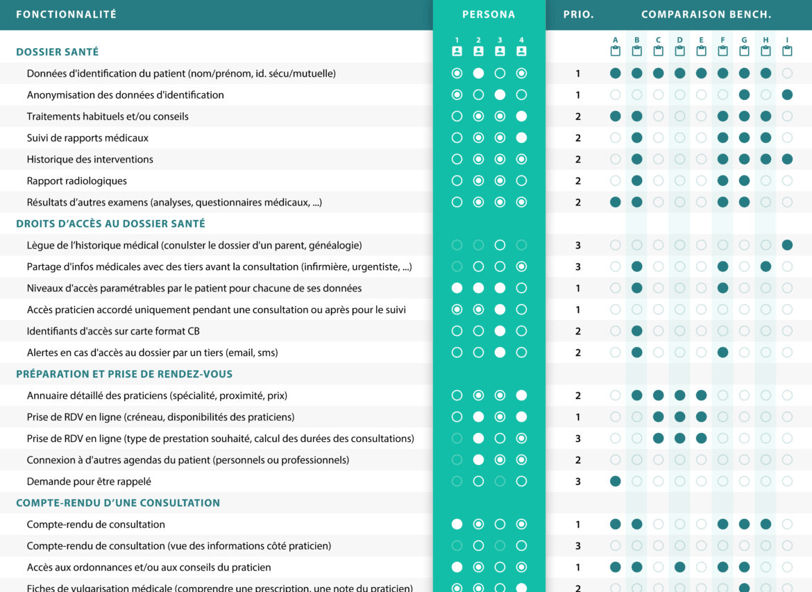

GRAPHICAL PROPOSALS OF THE PLATFORM
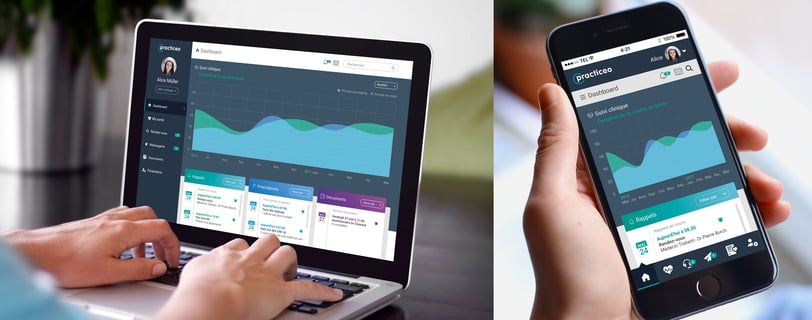

© 2024. All rights reserved.
